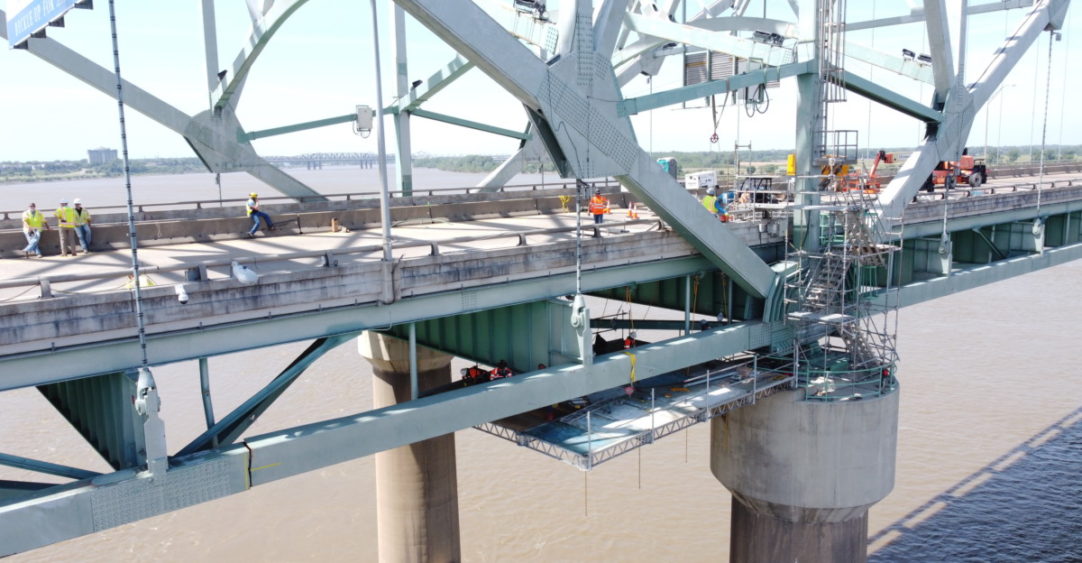
The Who, What, Where, When, Why, & How of Structural Assessments
Two stories that dominated the news cycle during the 2021 summer months were the Surfside condominium collapse and the crack discovered in the Hernando de Soto Bridge. Each of these events confirms the value and importance of structural assessments. A structural assessment is performed to ensure that a building or bridge meets all applicable codes related to structural integrity. It is looking for signs of potential structural issues or maintenance issues that could lead to failure in the future. Read on to learn the basic who, what, where, when, why, and how for a foundational knowledge of structural assessments.
Who
Structural assessments should be performed by trained and experienced engineers. Depending on the size of the facility, the assessment team could be comprised of a single engineer or team. An owner or facility representative is sometimes needed to grant access to the building, but they aren’t typically needed to escort the assessment team.
What
Any building or bridge is a candidate for a structural assessment. For buildings, this includes single story, multi-story, mid-rise, or high-rise buildings of any construction method. For bridges, an assessment can be completed for structures comprised of steel, concrete (precast, cast-in-place, prestressed, post-tensioned), masonry, wood, etc. Truly there isn’t a building or bridge that a structural assessment could not be performed on.
When performing an assessment, the team is looking for the following issues to uncover:
- Cracking in concrete
- Evidence of member overload
- Water damage
- Corrosion and deterioration
- Foundation settlement
Where
Best practice for a structural assessment is to have the engineer physically on site. A thorough assessment can be very hands on and tactile as the team is looking at structural elements of the building or bridge: joints, beams, columns, foundations.
Not ideal, but in extreme circumstances, an assessment can be done remotely, with someone onsite walking the facility and video conferencing with engineer.
When
Just as any building or bridge is a candidate, a structural assessment can be performed any time of year. It can be beneficial to do one after a heavy rain because leaking is more evident, but that’s not necessary.
Depending on the depth of assessment requested, size of building, and other factors, an assessment can take a single day or a full week
Why
As mentioned earlier, a structural assessment is performed to ensure that a building or bridge meets all applicable codes related to structural integrity. It is looking for signs of potential structural issues or maintenance issues that could lead to failure in the future.
A building’s owner may want an assessment performed for several reasons:
- Routine assessment
- Potential issue
- Insurance requirement
- Due diligence as a requirement of building sale/purchase
Additionally, different climates can impact buildings differently. The ownership team will want an experienced engineer that understands the unique environmental factors of their location and how these factors can impact the structural integrity.
How
A structural assessment can be broken down into three phases: the onsite assessment, report production, and follow-up.
During the onsite assessment, the engineer is physically walking the facility and looking at the structural integrity of the building or bridge. This includes using as-built drawings as a guide and taking lots of photos of potential issues. We use GIS applications to facilitate the collection of accurate information.
After being onsite, the engineer produces a report at the level of detail requested by the owner. This includes the onsite photos used to illustrate issues, and the engineer interpreting the data and findings to produce a summary report. The report should include two key items: point out uncovered issues and include recommendations to repair.
From the information provided in the report, the owner may decide to engage the engineer or a third party to perform repairs. Based on the severity of the issues, these may range from cosmetic fixes to major design repairs. Some issues need to be addressed immediately while others can wait. An example of an immediate fix would be chemical corrosion at an industrial facility while surface rust on a structural member does not require prompt attention.
We hope that by answering these simple questions – who, what, where, when, why, and how – you’re better informed to confidently embark on a structural assessment of your building or bridge.
After the tragic Surfside condominium collapse outside of Miami in 2021, SSR was engaged by the ownership team of FTX Arena to provide a structural assessment of the building with a major focus on the parking garage. Click here to read about our experience.








